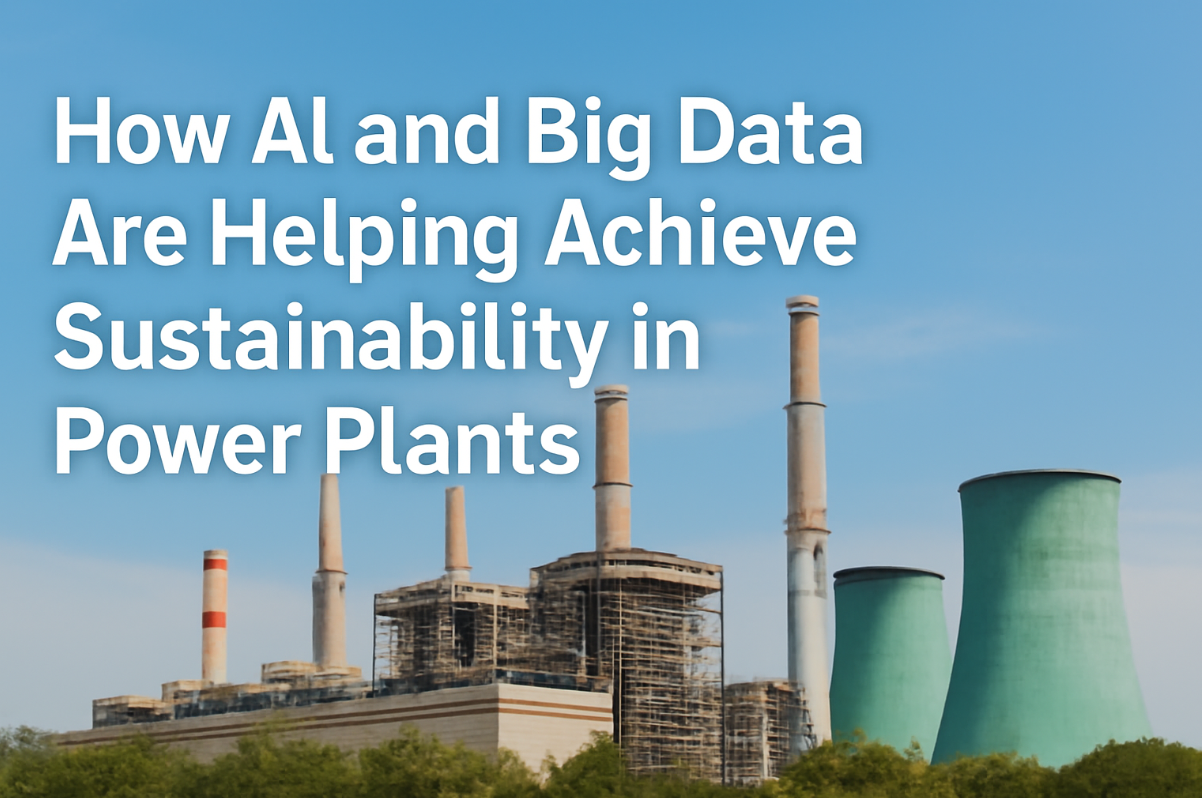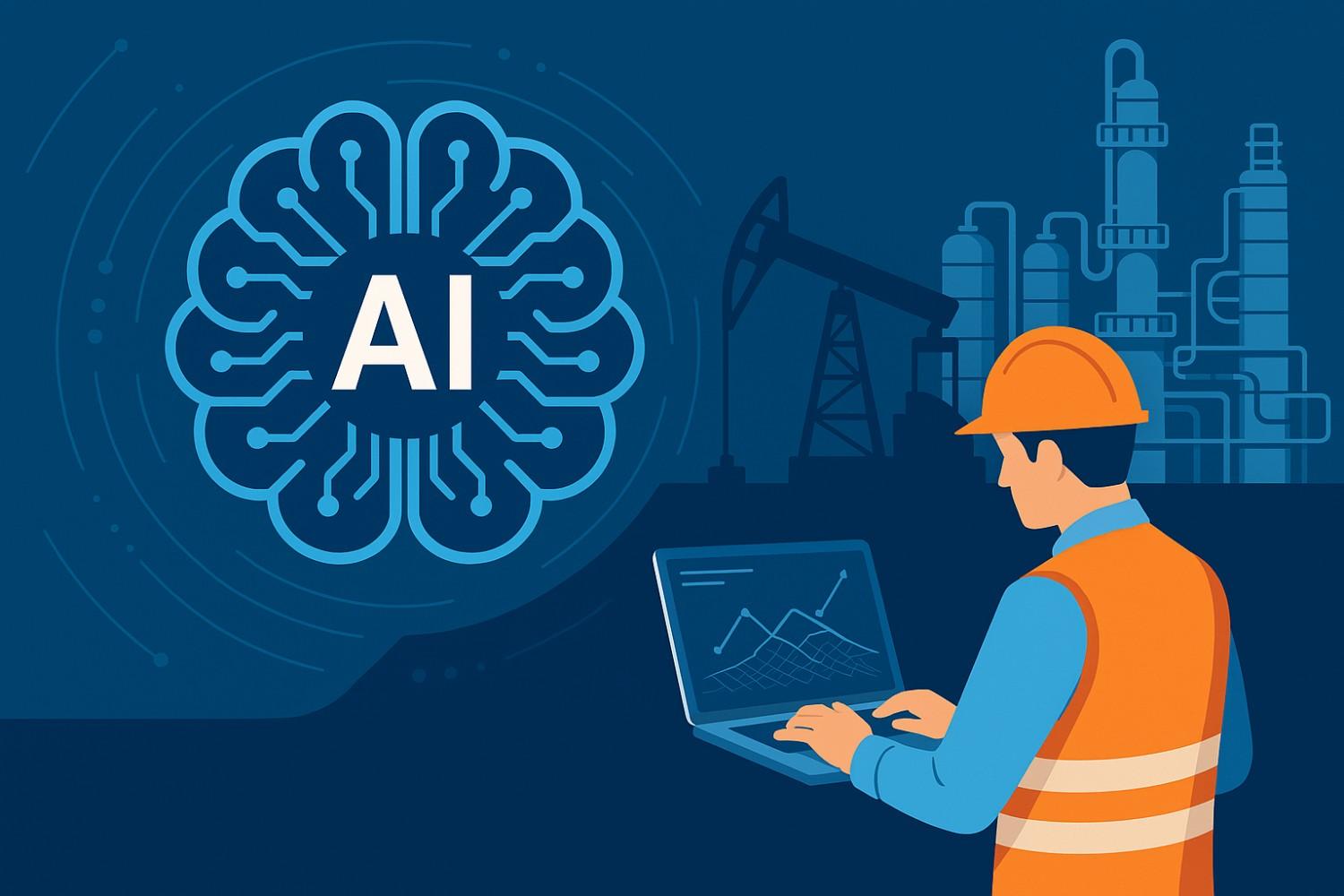In power generation, improving operational performance and meeting regulatory requirements are essential. Power plants use advanced digital solutions to optimize processes and manage energy flow. This blog explains how technology is reshaping operations and driving measurable improvements in performance and sustainability.
Key Drivers of AI and Big Data Adoption in Power Plants
Power plants increasingly adopt digital solutions to address operational complexities and data overload. Decision-makers need tools that provide clear, actionable insights. Regulatory pressure, environmental mandates, and cost-control initiatives have pushed the industry to explore solutions integrating technology with existing systems.
For instance, detailed monitoring of equipment and energy use is now possible. Operators use insights derived from big data in energy to identify patterns that might otherwise go unnoticed. Similarly, employing AI for energy efficiency has enabled managers to reduce waste and optimize maintenance schedules. Both methods contribute to improved resource allocation and better performance across plant operations.
The availability of precise data and automated analytics encourages a shift toward digital solutions. This transition is essential for addressing increasing system complexity and meeting strict environmental standards.
How AI and Big Data Are Transforming Power Plant Operations
Digital systems now handle tasks that once required manual oversight. Enhanced monitoring and real-time data analysis have improved both reliability and efficiency. Operators benefit from insights from big data in energy, which help prevent critical failures and minimize downtime.
Artificial intelligence now analyzes operational data to predict equipment issues and optimize maintenance. With AI for energy efficiency guiding adjustments in resource allocation, plants operate with fewer interruptions. Automation has replaced repetitive tasks, allowing operators to focus on strategic decisions.
AI for Smart Grid and Load Balancing
Modern smart grids use AI to monitor load fluctuations and adjust real-time distribution. These systems ensure that energy supply matches demand closely. Using AI for energy efficiency in smart grid management helps prevent overloads and power outages by balancing the load effectively.
AI-Powered Predictive Maintenance for Energy Efficiency
Modern smart grids use AI to monitor load fluctuations and adjust real-time distribution. These systems ensure that energy supply matches demand closely. Using AI for energy efficiency in smart grid management helps prevent overloads and power outages by balancing the load effectively.
Big Data for Smart Energy Management
Collecting and analyzing large volumes of data has redefined energy management. Operators use big data in energy to understand consumption trends and adjust operations accordingly. When paired with AI for energy efficiency, this approach reduces waste and meets environmental targets by ensuring optimal energy use.
AI in Renewable Energy Integration
Integrating renewable sources into existing systems poses unique challenges. AI helps balance variable energy inputs and maintain steady output levels. Using power plant renewable energy strategies with AI integration ensures a smooth blend of conventional and renewable sources. This balance is crucial for maintaining consistent operations.
AI in Emission Control and Environmental Compliance
Meeting emission standards is non-negotiable. AI systems continuously monitor sensor data to detect deviations and initiate corrective actions. Enhanced oversight using big data in energy analytics allows for rapid intervention, ensuring emission levels remain within prescribed limits while preserving operational efficiency.
Business Challenges Impacting AI Adoption in Power Plants
Despite clear benefits, digital transformation comes with its share of challenges. Financial constraints, integration of decentralized data, and cybersecurity concerns are among the main obstacles.
Financial Implications
Adopting new technology involves substantial investment. Companies must evaluate initial costs against long-term benefits. Evidence suggests that the savings from AI for energy efficiency quickly justify the initial expenditure. Investment in big data in energy solutions often leads to reduced operational costs and more predictable maintenance expenses.
Identifying and Prioritizing Innovation Opportunities
Selecting which digital projects to pursue can be challenging. Organizations must use reliable data to prioritize initiatives with measurable benefits. Detailed performance metrics, often derived from big data in energy, enable decision-makers to focus on the most promising opportunities.
Need for Rapid, Data-Driven Investment Strategies
The rapid pace of technological change requires companies to make swift, informed decisions. Agile strategies, driven by real-time insights from AI for energy efficiency, allow organizations to adapt quickly. These methods support investment in the most beneficial digital tools, ensuring that the transition is both smooth and effective.
Accommodating Decentralized Data
Modern power plants produce data from numerous sources. Integrating these disparate data streams is a key challenge. Using big data in energy frameworks, operators can consolidate information, leading to a comprehensive view of operations. This integration supports big data energy efficiency and consumption monitoring, which is essential for effective decision-making.
Cybersecurity Challenges in AI Adoption
Digital solutions can expose systems to cyber threats. Ensuring robust security is vital, especially when interfacing AI for energy efficiency systems with older infrastructure. Investments in cybersecurity help protect big data in energy systems and safeguard operational integrity.
A Use Case for AI in Managing Growing Power Demand
Consider a mid-sized power plant that experienced frequent overloads during peak demand. The plant could adjust its parameters dynamically by integrating an AI system that analyzed real-time operational data. The application of big data in energy analytics enabled the facility to predict load spikes and reallocate resources as needed. In addition, AI for energy efficiency algorithms streamlined maintenance routines, reducing unexpected downtime.
This plant also adopted power plant renewable energy options to supplement its traditional sources. The combined use of big data in energy insights and AI for energy efficiency measures improved overall efficiency by 15%. The example demonstrates how digital tools can yield tangible benefits in performance and sustainability.
Ingenero’s Applied AI Solutions help power plants leverage intelligent data models and real-time analytics to meet energy efficiency and sustainability goals.
The Future of AI and Big Data in Power Plants
Artificial intelligence and big data analytics are transforming power plant operations, enhancing efficiency, and optimizing maintenance procedures. Advanced AI algorithms enable real-time monitoring and predictive maintenance, reducing downtime and operational costs. Big data analytics improve fuel management, grid integration, and emissions control. By leveraging these technologies, power plants achieve higher reliability and sustainability.
In addition, the growth of power plant renewable energy integration will further diversify energy sources, making operations more resilient and less dependent on a single power source.
Our Sustainability Energy Solutions provide tailored strategies using AI, big data, and renewable integration to help power plants boost efficiency and meet long-term environmental goals.
Conclusion
Digital transformation in power plant operations is essential to meet modern challenges. Solutions based on big data in energy and AI for energy efficiency improve performance and ensure regulatory compliance. These technologies deliver clear benefits despite challenges like financial constraints, data integration, and cybersecurity.
Practical applications, including AI in energy-saving strategies, lower operational costs and boost performance. Companies can build sustainable power plants with targeted investments that set new industry benchmarks. Enhanced monitoring through big data energy efficiency and consumption supports long-term growth.
Integrating power plant renewable energy sources underlines technology’s role in creating a balanced, future-ready energy landscape. These advancements drive the industry toward a resilient, sustainable future. Digital innovation continues to propel progress forward.




